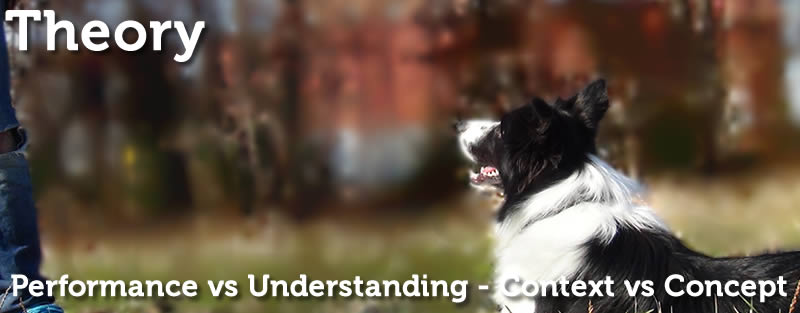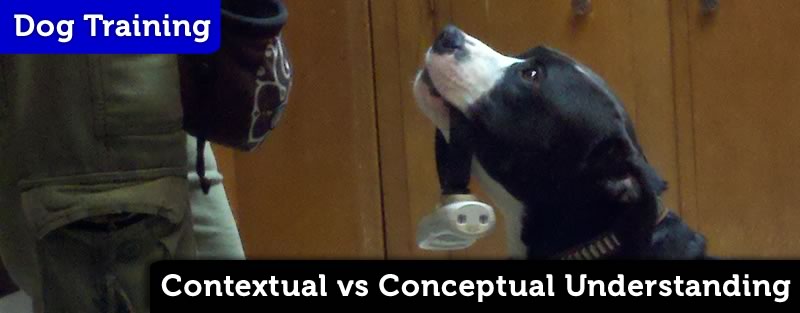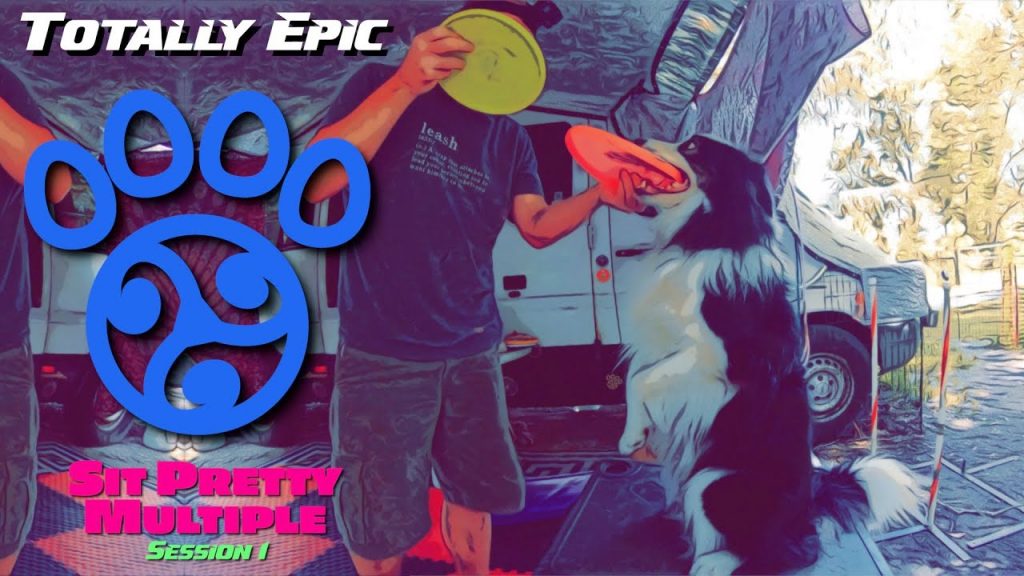
Performance vs Understanding – Context vs Concept
More in this series:
Performance is not Understanding
Human Clicker Game
Performance can be based upon conceptual or contextual understanding(pretty heavy stuff… might want to finish this first…). Unfortunately, if the handler is not trying to deliver the conceptual understanding to the dog, then odds are that the performance of the behavior will be based upon contextual understanding – the situation or external stimuli are what define and trigger the behavior. It should be no surprise that behaviors that are processed and understood by the situation or environment are hard to generalize to a new situation or environment. Obviously… right?
When the dog is performing based upon conceptual understanding, then the dog is looking inward recalling the reward history and specific, well identified, criteria of behaviors and concepts that have been learned in the past. Concepts can be assembled into behaviors and they are able to be assembled in many situations. As long as you don’t stretch the criteria or push the distraction too far, you can get performance in a wide variety of situations rather quickly, and foster a conceptual understanding of skills.
If your dog can recall the criteria and reward history as concepts (ie – touch, bite, hold, carry, out, give, leave it – things I know) instead of context (“go get it bring it back” – what I do) they can leverage those concepts to create behaviors in many situations instead of being dependent upon getting stuck trying to read the situation. Well how does that work? How does a handler communicate conceptual understanding to the dog and avoid performance based on the context of the situation? It’s simple, but not easy…









This is such a hard thing! My golden, Logan, is soooo tough with this. I have done a very bad job generalizing his behaviors to the point that he ONLY wants to play disc in our yard and acts like he doesn’t know any of his obedience behaviors. In the dog training school his obedience is very good and it takes him a while to warm up to playing disc there. The only way I know to work on this is to work on the behaviors in lots of different situations/locations to help to generalize. Unfortunately, I can rarely find the time anymore to teach new things let alone work on things in multiple places. I would be interested to hear if you think that the WAY you teach the behaviors to begin with can help the dog to generalize throughout. This would help our shelter dogs as well. We do lots of training with them here, but it often doesn’t cross over to their new home.
Same here… takes a while before my dog realizes what sit means when I have a disc in my hand. Go figure!